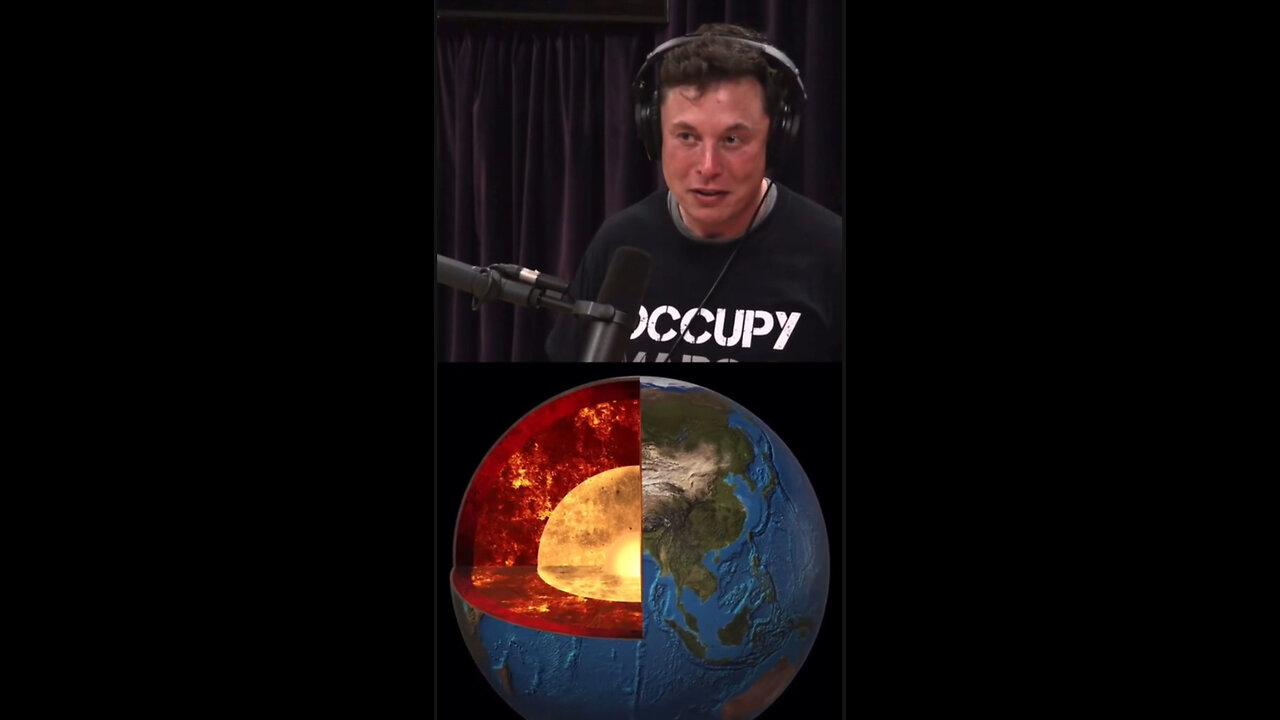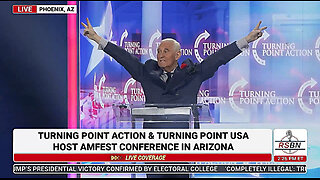Premium Only Content

The Enduring Wisdom of a Flat and Stationary Earth: A Cross-Cultural Perspective
The concept of a flat and stationary Earth is not merely a relic of ancient cosmology but a synthesis of enduring wisdom found in sacred scriptures and philosophical treatises. This argument weaves together religious narratives, ancient cosmologies, and phenomenological observations to present a compelling case for a flat Earth model that challenges modern scientific paradigms.
Biblical Descriptions of the Earth:
1. The Creation Narrative: Genesis 1
• Genesis 1:1-2 (KJV): “In the beginning God created the heaven and the earth. And the earth was without form, and void; and darkness was upon the face of the deep. And the Spirit of God moved upon the face of the waters.”
• This passage describes the Earth as initially formless, with waters covering the deep, suggesting a vast, flat surface.
• Genesis 1:6-8 (KJV): “And God said, Let there be a firmament in the midst of the waters, and let it divide the waters from the waters. And God made the firmament, and divided the waters which were under the firmament from the waters which were above the firmament: and it was so.”
• The firmament is described as a solid structure that separates the waters above from the waters below, implying a dome-like covering over a flat surface.
• Genesis 1:9 (KJV): “And God said, Let the waters under the heaven be gathered together unto one place, and let the dry land appear: and it was so.”
• The gathering of waters and the appearance of dry land suggest a flat surface where water and land coexist.
2. The Firmament: A Solid Dome
• Genesis 1:14-17 (KJV): “And God said, Let there be lights in the firmament of the heaven to divide the day from the night; and let them be for signs, and for seasons, and for days, and years: And let them be for lights in the firmament of the heaven to give light upon the earth: and it was so. And God made two great lights; the greater light to rule the day, and the lesser light to rule the night: he made the stars also. And God set them in the firmament of the heaven to give light upon the earth.”
• The sun, moon, and stars are set in the firmament, suggesting they move across the sky within this solid dome over the flat Earth.
3. The Earth’s Foundations
• 1 Samuel 2:8 (KJV): “He raiseth up the poor out of the dust, and lifteth up the beggar from the dunghill, to set them among princes, and to make them inherit the throne of glory: for the pillars of the earth are the Lord’s, and he hath set the world upon them.”
• This passage describes the Earth as having pillars, indicating a stable, immovable foundation.
• Psalm 104:5 (KJV): “Who laid the foundations of the earth, that it should not be removed for ever.”
• The Earth’s foundations are laid so that it remains unmovable forever.
4. The Ends of the Earth
• Job 38:13 (KJV): “That it might take hold of the ends of the earth, that the wicked might be shaken out of it?”
• This passage mentions the ends of the Earth, which implies a flat surface with defined edges.
5. The Circle of the Earth
• Isaiah 40:22 (KJV): “It is he that sitteth upon the circle of the earth, and the inhabitants thereof are as grasshoppers; that stretcheth out the heavens as a curtain, and spreadeth them out as a tent to dwell in:”
• The reference to the “circle of the earth” is often interpreted as a flat disc, with the heavens stretched out above like a tent, reinforcing the flat Earth model.
Islamic Texts:
1. Quranic Descriptions
• Quran 71:19 (Sahih International): “And Allah has made for you the earth an expanse.”
• The description of the Earth being spread out like a carpet suggests a flat surface.
• Quran 13:3 (Sahih International): “And it is He who spread the earth and placed therein firmly set mountains and rivers; and from all of the fruits He made therein two mates; He causes the night to cover the day. Indeed in that are signs for a people who give thought.”
• This passage emphasizes the spreading out of the Earth, aligning with a flat Earth interpretation.
2. Firmament and Celestial Bodies
• Quran 2:22 (Sahih International): “Who made for you the earth a bed and the sky a canopy…”
• This verse suggests a flat Earth (“bed”) with the sky as a canopy above, aligning with the concept of a firmament.
Jewish Texts:
1. Talmudic Views
• Talmud Bavli, Pesachim 94b: “Rabbi Eliezer says: The world is like an exedra [a colonnade with one open side].”
• This passage suggests a flat, open structure for the Earth, consistent with a flat Earth model.
2. Biblical Passages
• Job 37:18 (KJV): “Hast thou with him spread out the sky, which is strong, and as a molten looking glass?”
• This description of the sky as a strong, spread-out structure supports the idea of a firmament over a flat Earth.
• Psalm 96:10 (KJV): “Say among the heathen that the Lord reigneth: the world also shall be established that it shall not be moved: he shall judge the people righteously.”
• The Earth’s immovability is emphasized here, reinforcing the idea of a stable, flat plane.
3. Ancient Hebrew Cosmology
• Talmud Bavli, Chagigah 12a: Describes the firmament as a solid structure, akin to a glass dome over the Earth.
• This aligns with the concept of a firmament as a solid dome over a flat Earth.
Additional Ancient Manuscripts:
1. Hindu Cosmology
• Bhagavata Purana: The Earth is described as a flat disc consisting of multiple concentric rings, each ring being a different continent. This reflects an ancient understanding of a flat Earth.
2. Norse Mythology
• Yggdrasil and Midgard: In Norse cosmology, the world is flat and surrounded by a great ocean, with a central axis (Yggdrasil) connecting different realms. Midgard, the world of humans, is described as a flat, circular area encircled by the ocean.
3. Ancient Chinese Beliefs
• Ancient Chinese cosmology envisioned the Earth as a flat square, reflecting the structure of the heavens. This concept of a flat Earth was integral to their worldview and cosmological understanding.
4. Greek Philosophy
• Early Greek philosophers such as Thales and Anaximander proposed a flat Earth model, with Thales believing it floated on water. These early philosophical ideas influenced subsequent cosmological models.
5. Ancient Egyptian Cosmology
• Nut and Geb: In ancient Egyptian cosmology, the sky goddess Nut is depicted arching over the flat Earth (Geb), supported by the air god Shu. This imagery reflects a flat Earth covered by a curved firmament.
6. Babylonian Cosmology
• Enuma Elish: The Babylonian creation myth describes the Earth as a flat disc, with the heavens created from one half of the slain primordial goddess Tiamat, reinforcing the flat Earth narrative.
Phenomenological Observations:
1. Horizon Observation
• Flat Horizon: From a flat Earth perspective, the horizon always appears flat and rises to eye level no matter the altitude. Unlike a spherical model where the horizon should drop with altitude, a flat Earth maintains a consistent horizon.
2. Celestial Movements
• Sun and Moon Circuits: According to the flat Earth theory, the sun and moon move in circular paths above the Earth, consistent with the Biblical description of them being set in the firmament. This explains the observable movement of the sun and moon across the sky, without the need for a rotating Earth.
3. Lack of Perceptible Curvature
• Flat Earth proponents argue that if the Earth were a sphere with a circumference of approximately 40,075 km, the curvature would be more noticeable to the naked eye, especially over large bodies of water.
Cross-Cultural Corroboration:
The recurring theme of a flat Earth across diverse cultures and religions suggests a shared ancient wisdom or observation. From the Biblical firmament to the Quranic expanse, the Hindu flat disc, the Norse Midgard, the Chinese flat square, the Egyptian depiction of Nut and Geb, and the early Greek models, there is a consistent depiction of the Earth as flat and stationary.
Philosophical Implications:
A flat Earth model can imply a more intimate and immediate relationship with the cosmos. Instead of viewing the Earth as a tiny, insignificant sphere in a vast, indifferent universe, the flat Earth model presents a world designed with purpose and structure. The firmament above serves as a protective dome, housing the celestial bodies that govern time and seasons, emphasizing a cosmos created with humanity in mind.
Conclusion:
The argument for a flat and stationary Earth, rooted in ancient wisdom and religious texts, presents a worldview where Earth is a unique and central stage for the cosmic drama. This perspective invites a re-examination of humanity’s place in the universe, challenging the prevailing scientific narrative with a model that places Earth and its inhabitants at the heart of creation.
By drawing from a diverse array of sources—including the Bible, Islamic texts, Jewish traditions, and ancient manuscripts from Hindu, Norse, Chinese, Greek, Egyptian, and Babylonian cosmologies—we see a consistent depiction of the Earth as flat and immovable. The descriptions of a solid firmament, the emphasis on Earth’s foundations, and the lack of perceptible curvature all contribute to a compelling case for the flat Earth model.
This model not only aligns with phenomenological observations but also offers profound philosophical implications. It suggests a universe designed with intention and purpose, where humanity holds a significant and central role. The flat Earth model challenges us to reconsider the nature of our reality and our relationship with the cosmos.
In conclusion, the synthesis of religious narratives, ancient cosmologies, and observational evidence presents a powerful and thought-provoking argument for the flat and stationary Earth. This perspective, grounded in a rich tapestry of cultural and historical wisdom, invites us to explore alternative understandings of our world and our place within it.
The Enduring Wisdom of a Flat and Stationary Earth: A Cross-Cultural Perspective offers a comprehensive and multidimensional argument, challenging the conventional heliocentric paradigm and inviting deeper reflection on the nature of our universe.
-
 1:14:05
1:14:05
Tucker Carlson
11 hours ago“I’ll Win With or Without You,” Teamsters Union President Reveals Kamala Harris’s Famous Last Words
173K338 -
 1:58:31
1:58:31
The Dilley Show
11 hours ago $1.42 earnedTrump Conquering Western Hemisphere? w/Author Brenden Dilley 12/23/2024
137K39 -
 1:09:59
1:09:59
Geeks + Gamers
12 hours agoSonic 3 DESTROYS Mufasa And Disney, Naughty Dog Actress SLAMS Gamers Over Intergalactic
93K21 -
 51:59
51:59
The Dan Bongino Show
13 hours agoDemocrat Donor Admits The Scary Truth (Ep. 2393) - 12/23/2024
852K2.85K -
 2:32:15
2:32:15
Matt Kohrs
1 day agoRumble CEO Chris Pavlovski Talks $775M Tether Partnership || The MK Show
131K31 -
 28:23
28:23
Dave Portnoy
1 day agoDavey Day Trader Presented by Kraken - December 23, 2024
160K43 -
 59:29
59:29
BonginoReport
15 hours agoTrump, Murder Plots, and the Christmas Miracle: Evita + Jack Posobiec (Ep.110) - 12/23/2024
167K139 -
 2:59:14
2:59:14
Wendy Bell Radio
17 hours agoNothing To See Here
132K79 -
 2:12:18
2:12:18
TheDozenPodcast
1 day agoIslam vs Christianity: Bob of Speakers' Corner
115K31 -
 14:36
14:36
The StoneZONE with Roger Stone
2 days agoRoger Stone Delivers Riveting Speech at Turning Point’s AMFEST 2024 | FULL SPEECH
135K35